Discover 35 hidden attractions, cool sights, and unusual things to do in Brunswick (Germany). Don't miss out on these must-see attractions: Dankwarderode Castle, Brunswick Cathedral, and Brunswick Lion. Also, be sure to include Herzog Anton Ulrich Museum in your itinerary.
Below, you can find the list of the most amazing places you should visit in Brunswick (Lower Saxony).
Table of Contents
Dankwarderode Castle
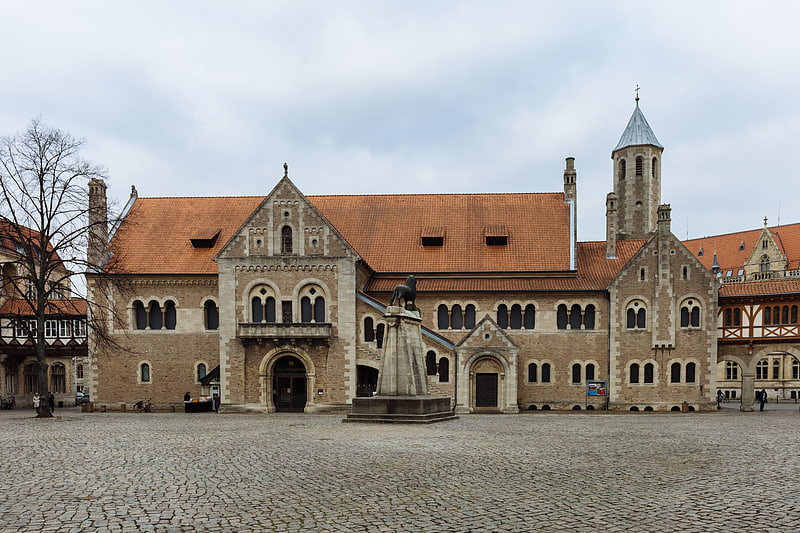
Also known as: Burg Dankwarderode
Castle displaying medieval artifacts. Dankwarderode Castle on the Burgplatz in Braunschweig is a Saxon lowland castle. It was the residence of the Brunswick dukes for centuries and, today, is part of the Herzog Anton Ulrich Museum.[1]
Address: Burgpl. 4, 38100 Braunschweig
Brunswick Cathedral

Also known as: Braunschweiger Dom
Historic cathedral with a royal tomb. Brunswick Cathedral is a large Lutheran church in the City of Braunschweig, Germany.
The church is termed Dom, in German a synecdoche - pars pro toto - used for cathedrals and collegiate churches alike, and much like the Italian duomo. It is currently owned and used by a congregation of the Evangelical Lutheran State Church of Brunswick.[2]
Address: Dompl. 5, 38100 Braunschweig
Brunswick Lion
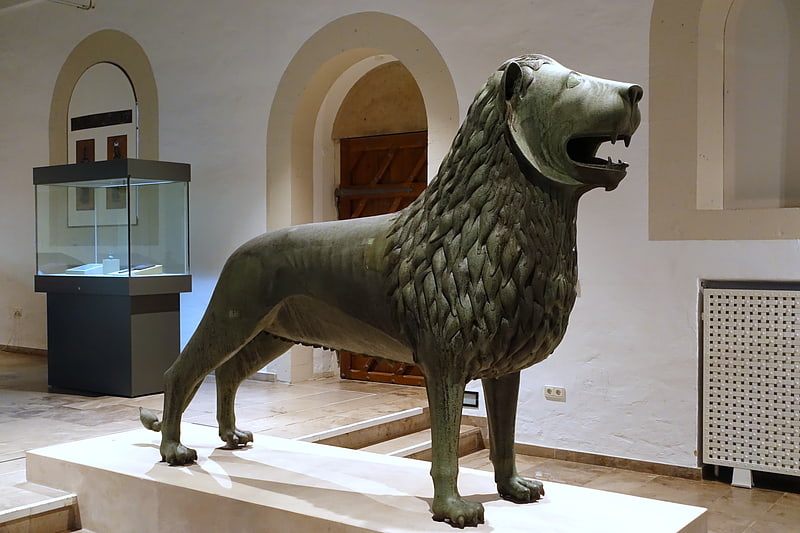
Also known as: Braunschweiger Löwe
Tourist attraction in Braunschweig, Germany. The Brunswick Lion is a medieval sculpture, created in bronze between 1164 and 1176, and the best-known landmark in the German city of Brunswick. The Brunswick Lion was originally located on the Burgplatz square in front of the Brunswick Cathedral. The monument was moved to Dankwarderode Castle in 1980, and later replaced at the original location by a replica. Within Brunswick, it is commonly known as the "Castle Lion".[3]
Herzog Anton Ulrich Museum
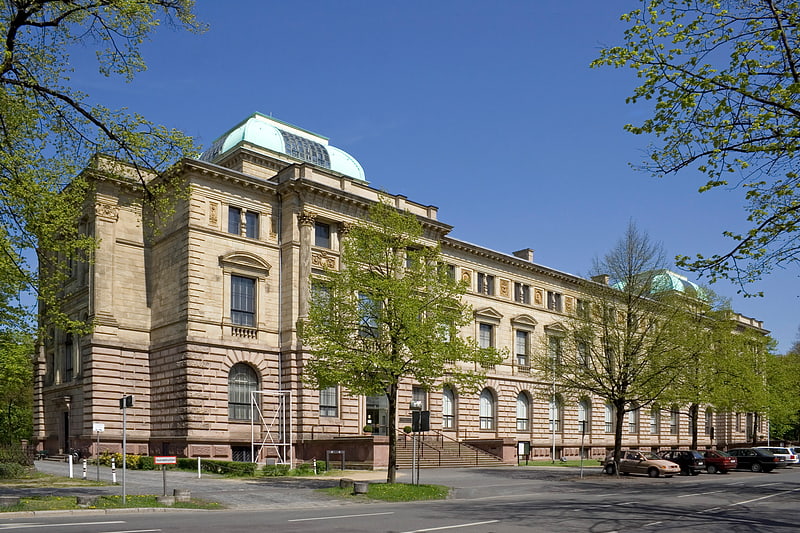
Also known as: Herzog Anton Ulrich-Museum
Art museum in Braunschweig, Germany. The Herzog Anton Ulrich Museum is an art museum in the German city of Braunschweig, Lower Saxony.[4]
Address: Museumstraße 1, 38100 Braunschweig
Brunswick Palace
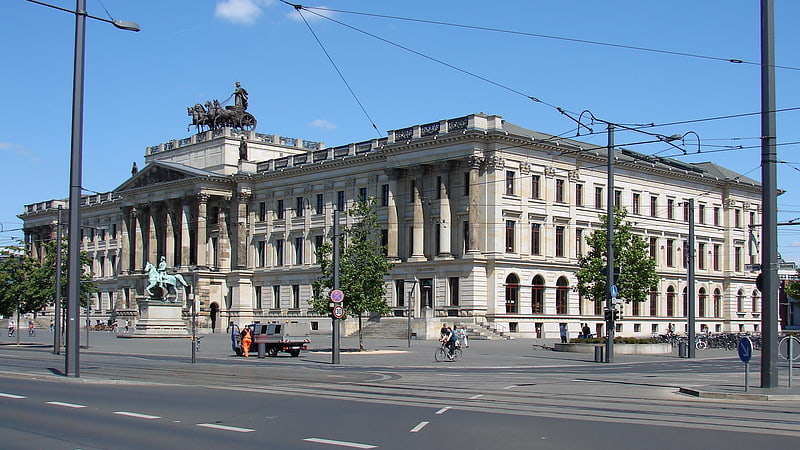
Also known as: Braunschweiger Schloss
Castle in Braunschweig, Germany. Brunswick Palace on the Bohlweg in the centre of the city of Brunswick, was the residence of the Brunswick dukes from 1753 to 8 November 1918.[5]
Address: 1 Platz am Ritterbrunnen, Brunswick
Braunschweigisches Landesmuseum
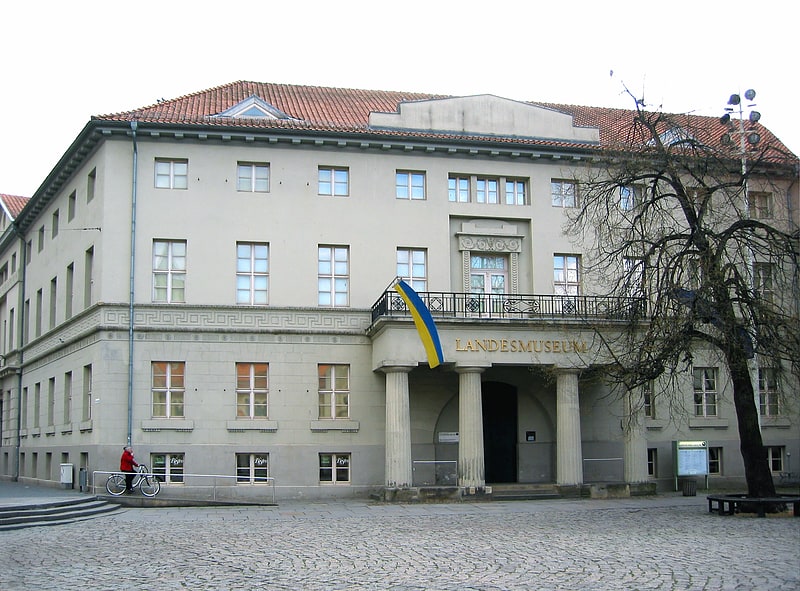
Museum in Braunschweig, Germany. Braunschweigisches Landesmuseum is a history museum in Braunschweig, Germany, operated by the state of Lower Saxony. The museum is scattered on four locations: Vieweghaus, Hinter Ägidien, Kanzlei and Bauernhausmuseum.
The collection covers 500,000 years and includes objects from the history of the Braunschweig area, including culture, economy, technology, folk arts, and social history. Today, the BLM hosts a collection of 600,000 to 800,000 objects.[6]
Address: Burgpl. 1, 38100 Braunschweig
State Natural History Museum
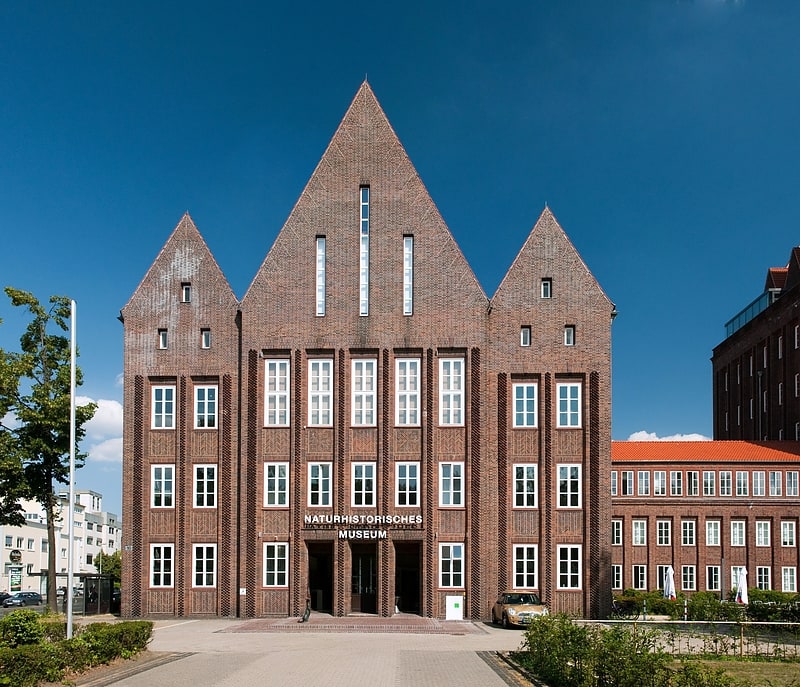
Also known as: Naturhistorisches Museum
Museum in Braunschweig, Germany. The State Natural History Museum in Braunschweig, Germany, is a zoology museum. It was founded in 1754.[7]
Address: Pockelstrasse 10, 38106 Braunschweig
Eintracht-Stadion
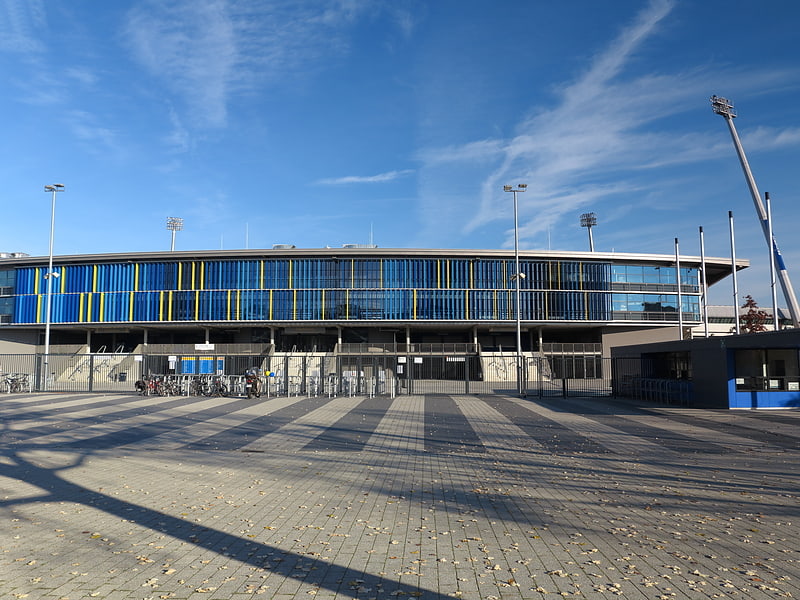
Multi-purpose stadium in Braunschweig, Germany. Eintracht-Stadion is a multi-purpose stadium in Braunschweig, Germany. It is currently used for football and American football matches and is the home stadium of Eintracht Braunschweig and the New Yorker Lions. The stadium is able to hold 24,406 people and was built in 1923.[8]
Address: Hamburger Str. 210, 38112 Braunschweig
Schloss Richmond
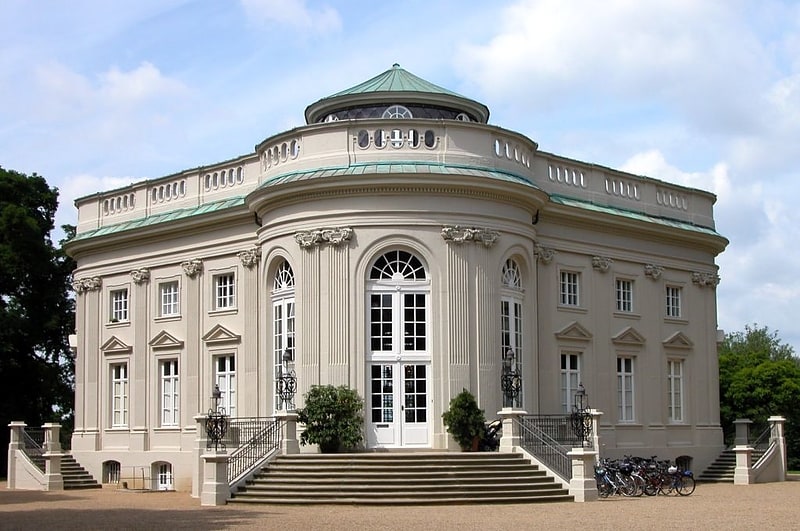
Richmond Castle is a castle built from 1768 to 1769 in Braunschweig, Germany for Princess Augusta, wife of Karl Wilhelm Ferdinand. It lies near the Oker river in the south of the city. The architect was Carl Christoph Wilhelm Fleischer.
The castle was named after the princess's English home in Richmond Park, a royal park now in the London Borough of Richmond upon Thames.[9]
Address: Wolfenbuetteler Str. 55, 38124 Braunschweig
Volkswagen Halle
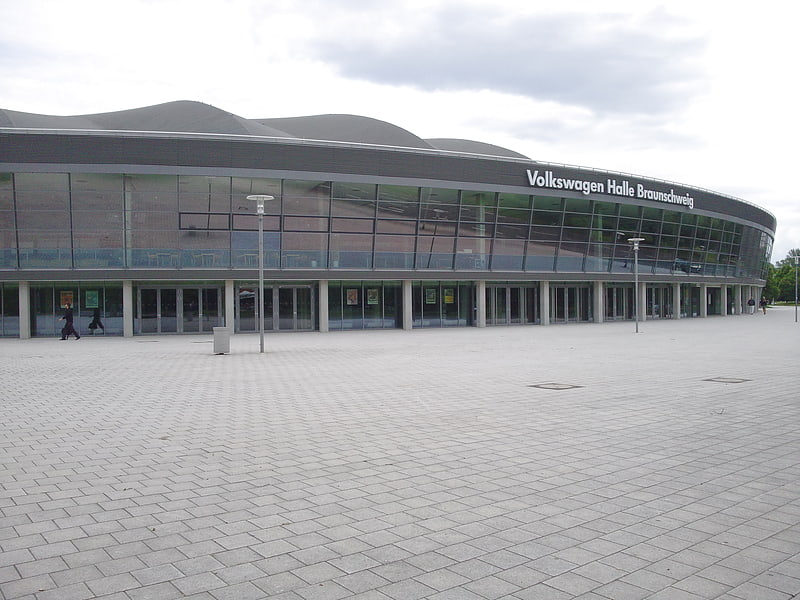
Sports arena in Braunschweig, Germany. Volkswagen Halle is an indoor sporting arena located in Braunschweig, Germany. The capacity of the arena is 8,000 people. It is currently home to the Basketball Löwen Braunschweig basketball team.[10]
Address: Europaplatz 1, 38100 Braunschweig
Riddagshausen Abbey
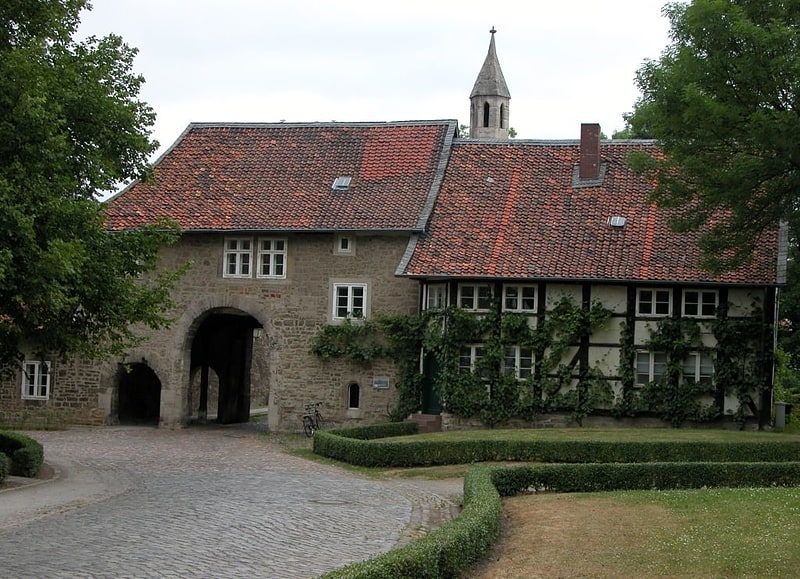
Also known as: Kloster Riddagshausen
Riddagshausen Abbey was a Cistercian monastery just outside the city of Brunswick in Germany.
It was founded as Marienzelle by Ludolf the Wend, a ministerialis of Henry the Lion and steward of Brunswick, and settled in 1145 by monks from Amelungsborn Abbey. Henry endowed the new foundation in 1146 with the neighbouring village of Riddagshausen, from which it took its name.
The abbey early acquired reichsunmittelbar status as an Imperial abbey.
It was mediatised in 1569 by Brunswick-Wolfenbüttel, when it became a Protestant establishment. From 1690 it was also the home of a prestigious Lutheran seminary for training of preachers, the first in Germany. The religious community and the seminary were dissolved in 1809.
The site, now included within the city of Brunswick, in the district of Wabe-Schunter-Beberbach, is now mostly a nature reserve and arboretum. The nature reserve Riddagshäuser Teiche is designated as Important Bird Area and Special Protection Area.
The surviving buildings include the abbey church and the gate house, now home of the Cistercian Museum[11]
Address: Klostergang 64, 38104 Braunschweig
Botanical Garden
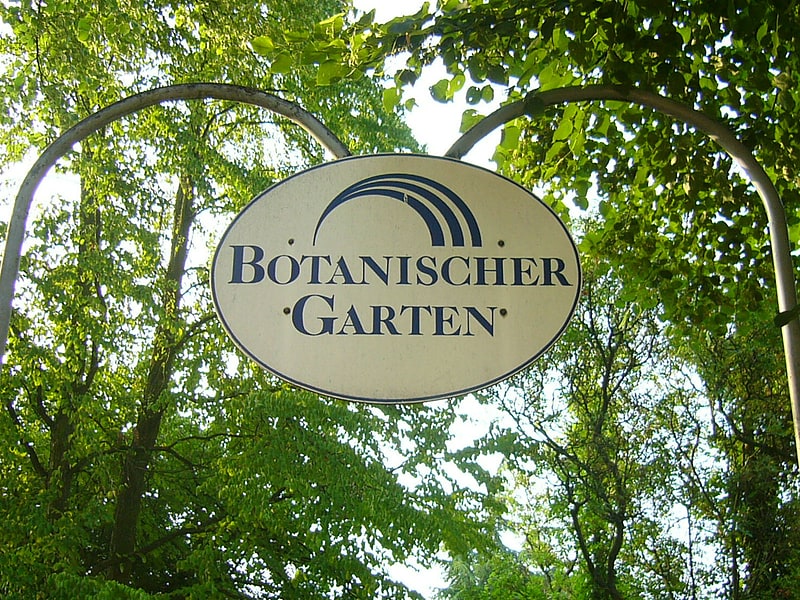
Also known as: Botanischer Garten
Botanical garden in Braunschweig, Germany. The botanical garden of the TU Braunschweig was founded in 1840 by Johann Heinrich Blasius on the banks of the River Oker on the grounds of the former stately mansion in the woods of Braunschweig, Lower Saxony, Germany.
It was originally started in 1828 on the opposite bank of the Oker - a much smaller garden by Blasius, who sought a larger site. The old garden was lost in 1868.
By 1900, there were 2700 species outside and 1200 in greenhouses. Some trees from 1840 remain today. During the Second World War, the garden suffered bombing, especially in the years 1944/45, and was partially destroyed, but was reconstructed after the end of the war.
In 1985, an approximately 800m² baroque garden, with an emphasis on farming, was laid out, which was augmented with a stream and a waterfall in a small ravine in 1989.
In 1995, the garden area was expanded by about 4 acres (16,000 m2). This area is mainly for research.[12]
Address: Humboldtstr. 1, 38106 Braunschweig
St. Ägidien
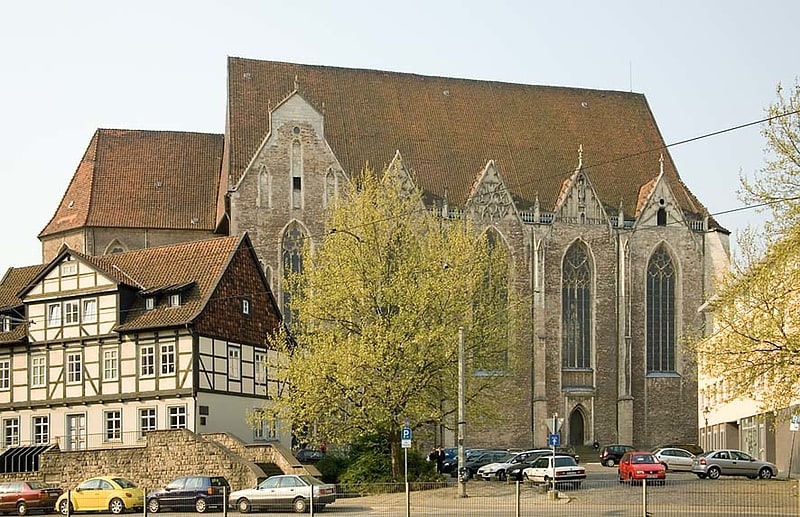
Also known as: Aegidienkirche
The Aegidienkirche or Liebfrauenmünster St. Aegidien is the main Roman Catholic church in the German city of Braunschweig, located in the city centre. It is a hall church in the Gothic style, built to replace a Romanesque building of 1115 which burned down in 1278. It acted as the abbey church to the Benedictine abbey of saints Maria and Aegidius, endowed by Gertrude of Brunswick, and after the monastery's abolition in the Reformation it was used as a Protestant church and for secular use as the Ägidienhalle. Since 1902 part of its former monastic buildings has been used by the Braunschweigisches Landesmuseum. In 1945 it was made a Roman Catholic parish church.[13]
Address: Ägidienmarkt 12A, Brunswick
Staatstheater Braunschweig

Theatre in Braunschweig, Germany. The Staatstheater Braunschweig is a theatre company and opera house in Braunschweig, Germany, presenting and producing music theatre, Tanztheater, theatre, Theatre for Young Audiences and concerts.
The Staatstheater Braunschweig is owned by the State of Lower Saxony.[14]
Address: Magnitorwall 18, Brunswick
Bruchstraße
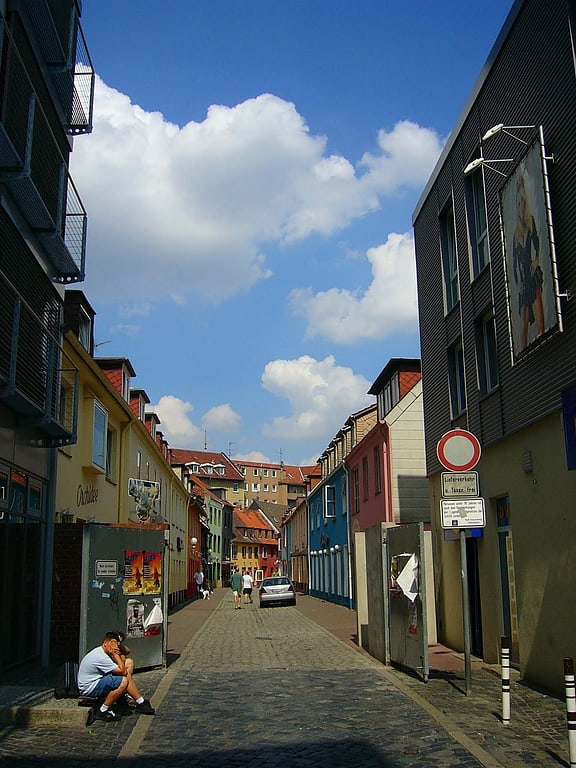
The Bruchstraße is a cobbled street in Braunschweig, Lower Saxony, Germany. The street has many historic half-timbered houses and is the centre of the city's red light district and has a number of "windows". There are iron gates at both ends of the street, at the junctions with Wallstraße and Friedrich-Wilhelm-Straße.[15]
Städtisches Museum Braunschweig
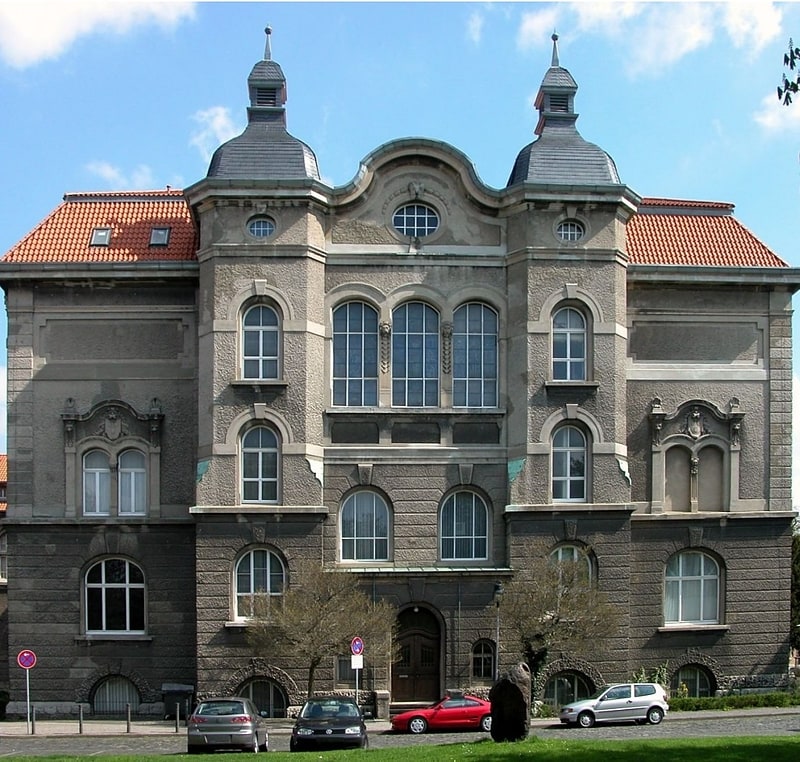
Founded in 1861, the Braunschweig Municipal Museum is one of Germany's largest museums of art and cultural history, with a collection of over 270,000 objects relating to Braunschweig's history.
Address: Steintorwall 14, 38100 Braunschweig
Happy Rizzi House

The Happy Rizzi House is a contemporary building in Braunschweig, Germany, designed by US artist James Rizzi and realized by Braunschweig architect Konrad Kloster. It is located at the Ackerhof.
Altstadtrathaus
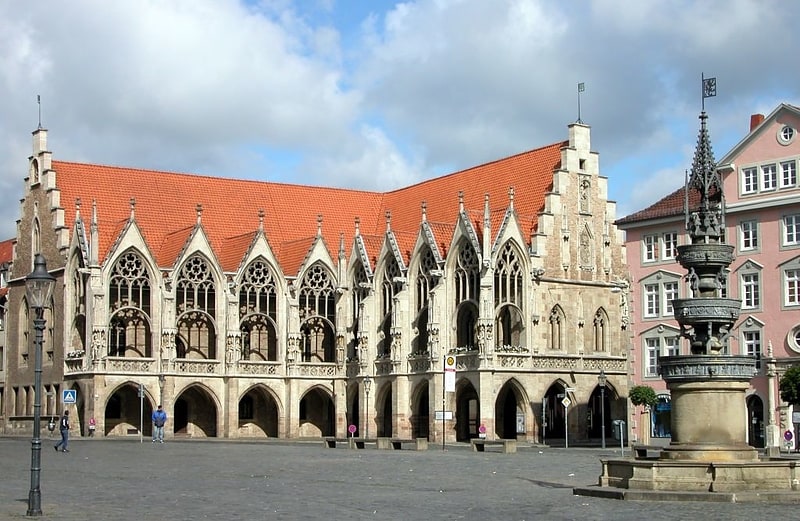
The Town Hall of the Old Town in Braunschwik - the former seat of the City Council. It is one of the oldest town halls in Germany, whose beginnings of history date back to the 13th century. It was built for one of the richest and most influential centers of the city of one of five so -called Weichbildów Brunschwik - the Old Town. Together with the church of Saint Martin, it forms the western frontage of the Old Town Square - a valuable historic team of the city. Currently, the ground floor occupies the Museum of the City of Braunschwik, and the rooms on the first floor are a place for solemn meetings, ceremonies related to the city and city authorities.
The first mention of the headquarters of the Municipal Government of the Old Town comes from 1253. In 1302 the town hall building was first mentioned in the sources. A new, brick Gothic style was erected on the site of a former wooden building, which is the current west wing. In the years 1393–1396, a two -storey northern wing was built. The current representative shape of the town hall is the result of the reconstruction in the years 1455–1468, at that time 17 stone figures were created attributed to the sculptor Hans Hesse the younger. They present rulers from the Ludolfing dynasty and welfes together with the spouses.
Address: Altstadtmarkt 7, 38100 Braunschweig
Museum für Fotografie Braunschweig
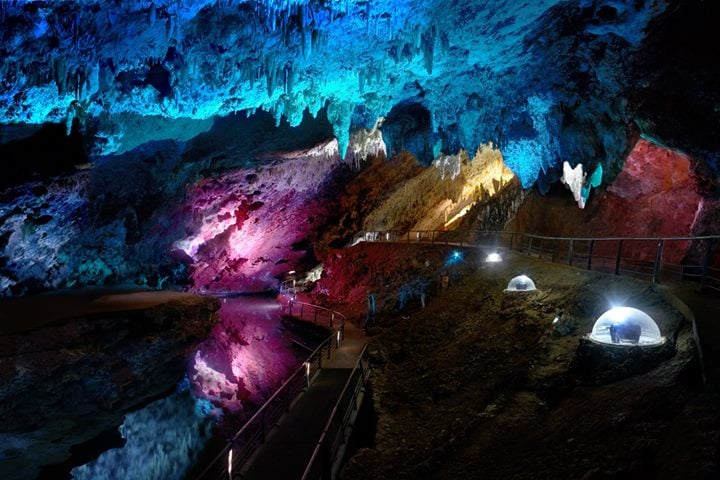
Museum, Art museum
Address: Helmstedter Str. 1, 38102 Braunschweig
Innenstadt
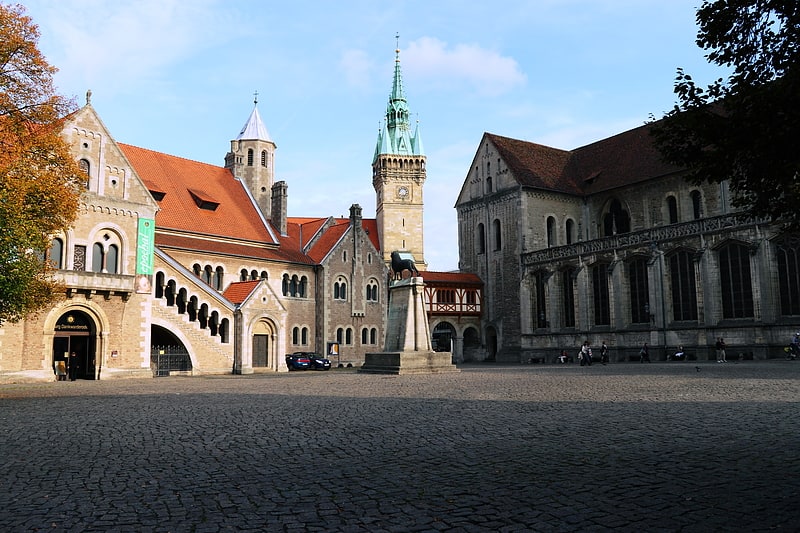
German urban district. The Innenstadt is the central Stadtbezirk of Braunschweig, Germany. The district consists of five formerly independent city municipal areas, and is surrounded by the river Oker and in area nearly identical to the medieval city of Braunschweig.[16]
St. Martini
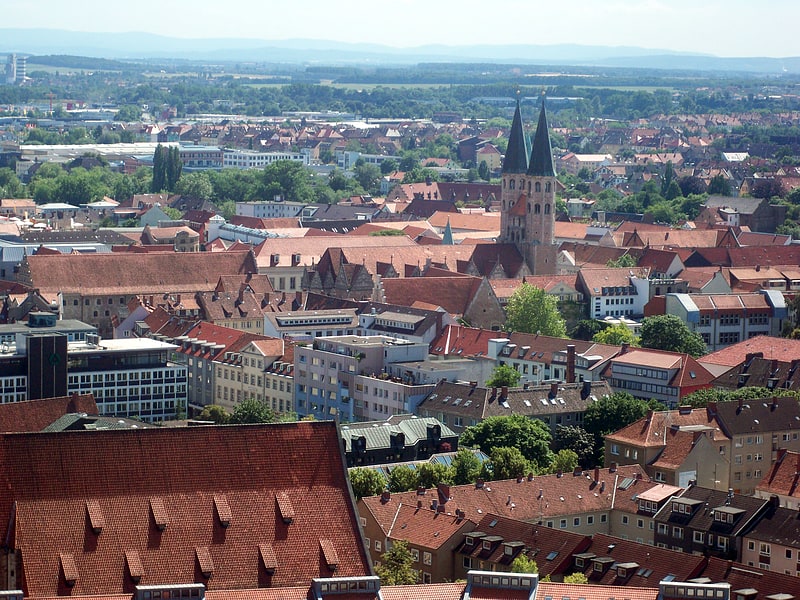
Saint Martin's Church in Brunschwik - the former parish church of the Old Town, an example of Romanesque and Gothic architecture in Germany. It is located near the western frontage of the Old Town Square.
Address: An der Martinikirche 5, 38100 Braunschweig
Helmholtz Centre for Infection Research
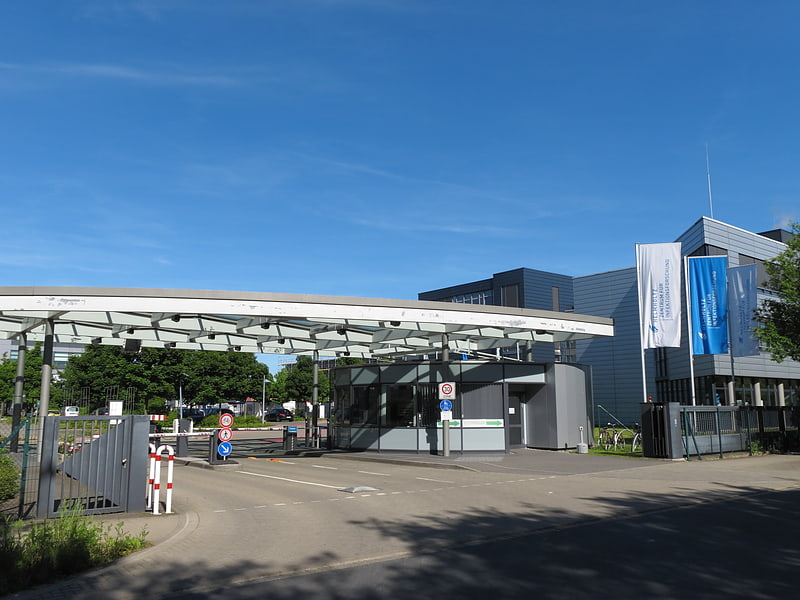
The Helmholtz Centre for Infection Research is a publicly funded research institute based in Braunschweig, Germany. HZI is a member of the Helmholtz Association of German Research Centres, the largest non-university scientific organisation in Germany.
The centre focuses on investigating infectious diseases caused by bacteria and viruses. Further research topics are the immune system and the development of novel anti-infective drugs.
The HZI was founded on 18 July 2006 by renaming the Gesellschaft für Biotechnologische Forschung mbh (GBF, German Research Centre for Biotechnology).[17]
Address: 7 Inhoffenstraße, Brunswick
Heidberg-Melverode
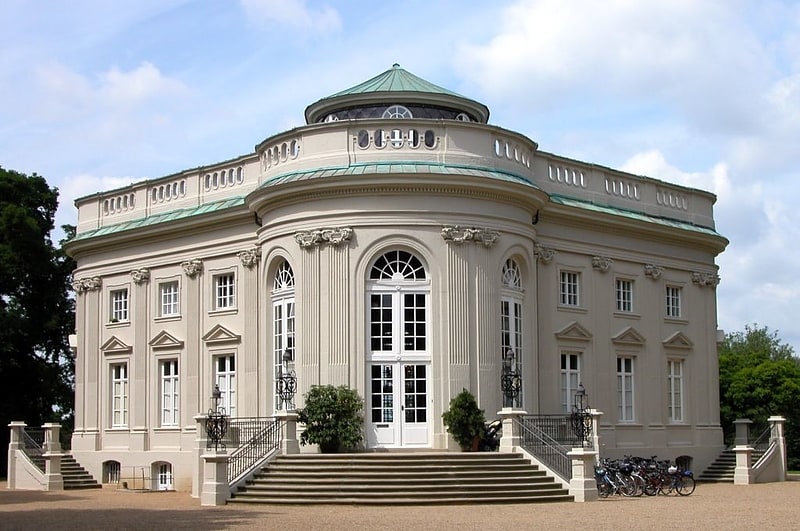
Heidberg-Melverode is a Stadtbezirk in the southern part of Braunschweig, Germany.
The Stadtbezirk comprises the quarters Heidberg and Melverode.[18]
St. Andreas
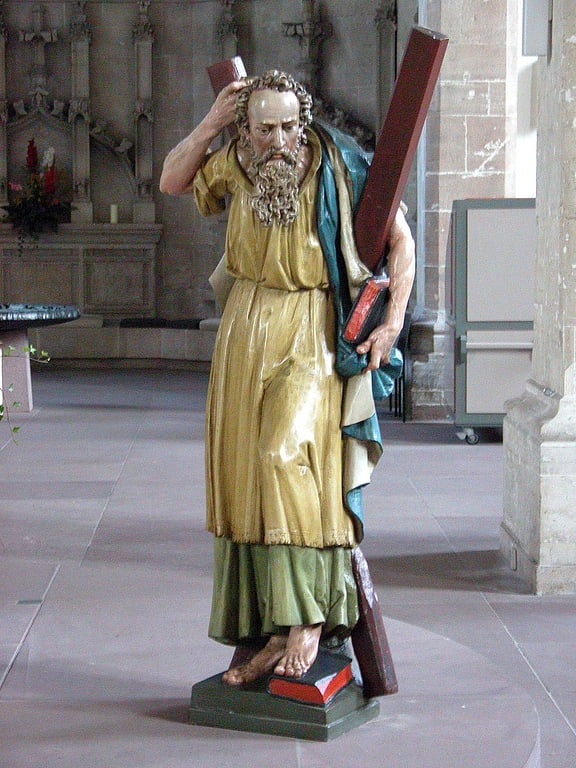
The origins of St. Andrew's in Brunswick probably go back to a hall church built around 1160. Around 1230, a three-nave basilica was built above it as a parish church for the congregation in Braunschweig's Neustadt. The St. Andrew's Church was first mentioned in a document in 1290 and has been a Protestant place of worship since 1528.
Address: An der Andreaskirche 1, 38100 Braunschweig
Wabe-Schunter-Beberbach
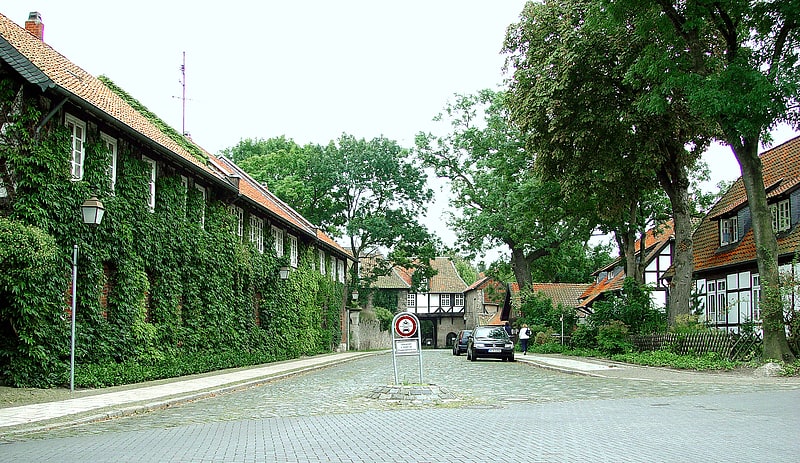
Wabe-Schunter-Beberbach is a Stadtbezirk in the north-eastern and eastern part of Braunschweig, Germany. The district is named after the river Schunter and its tributaries Wabe and Beberbach.
The Stadtbezirk comprises the quarters Bevenrode, Bienrode, Gliesmarode, Riddagshausen, Querum, and Waggum.[19]
Jakob Kemenate
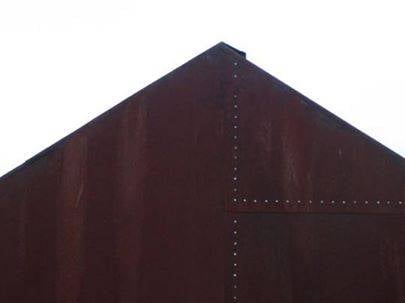
Historical place
Address: Eiermarkt 1a, 38100 Braunschweig
Liberei
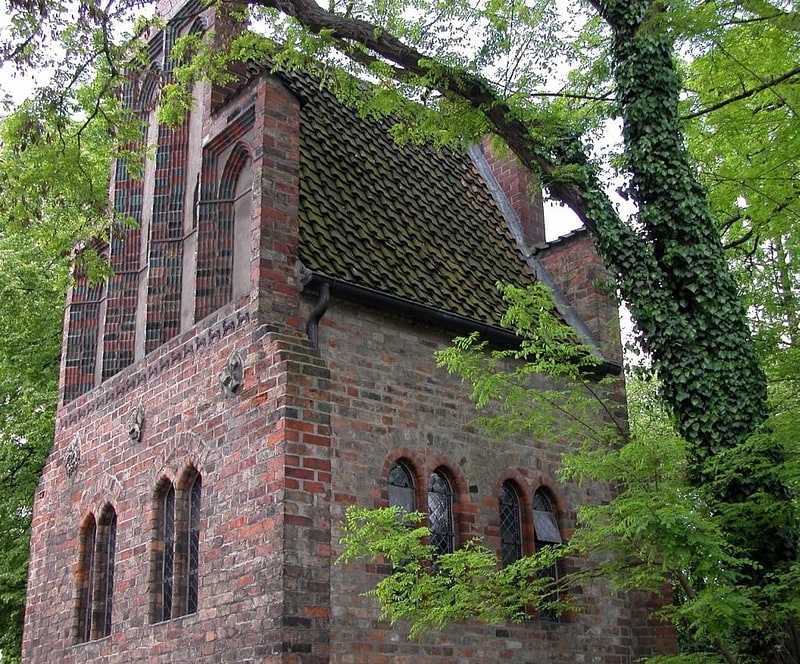
The Liberei, also called Liberey or Andreana, in Braunschweig is considered the oldest freestanding library building north of the Alps. It was built between 1412 and 1422 in Kröppelstraße in the Neustadt soft area, just a few meters southeast of the Andreaskirche. Through donations, among others from Johann Ember and especially Gerwin von Hameln, the library was known beyond the borders of the city and was considered one of the most important collections of books and manuscripts in northern Germany for more than 300 years until its dissolution in 1753.
The donation of 336 volumes by Gerwin von Hameln in 1495 marked both the high point and the turning point in the history of the library. After Gerwin's death, disputes arose between the city council and Gerwin's heirs for decades, so that the building and the book collection were permanently damaged by neglect and theft. Although contemporary scholars such as Johannes Bugenhagen in the 16th century or Hermann von der Hardt in the early 18th century pointed out both the importance of the Liberei as a source of knowledge and its endangered state, its decline could no longer be stopped. In 1753, the remaining holdings were transferred to a larger library. According to today's research, 137 volumes from Gerwin's estate are still preserved.
The chapel-like brick building measures only 5.50 meters × 5.14 meters in plan. The building was severely damaged during World War II and was not restored until 1963. The Liberei is the only evidence of medieval brick Gothic in the city and is also probably the oldest preserved building in Germany that was built exclusively as a library. The building is now a listed monument.
Address: 1 An der Andreaskirche, Brunswick
St. Katharinen
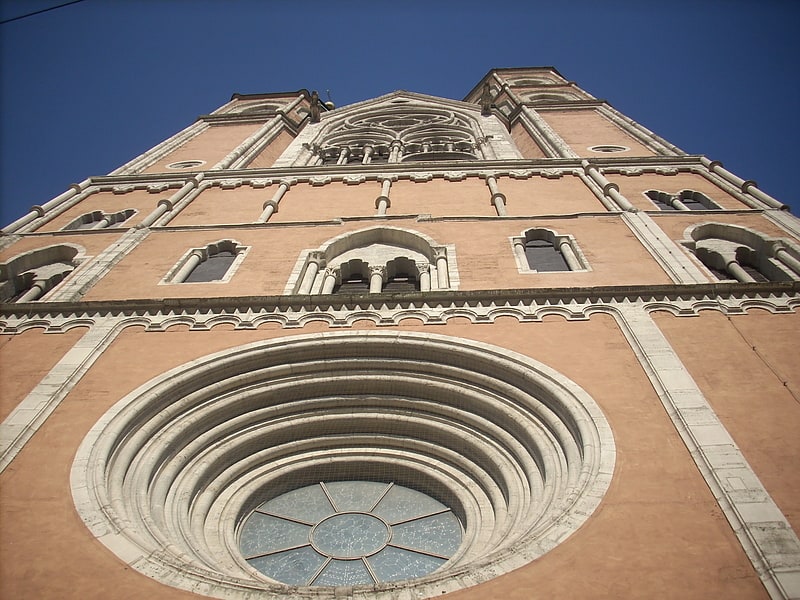
St. Catherine's Church in Brunswick was built in the early 13th century as the parish church of the Weichbild Hagen. An Evangelical Lutheran church since 1528, it dominates the east side of Hagenmarkt. The main patron saint is St. Catherine of Alexandria, of whose attributes - sword, wheel and crown - the wheel is found in the coat of arms of Hagen.
Address: An der Katharinenkirche 4, 38100 Braunschweig
St. Petri
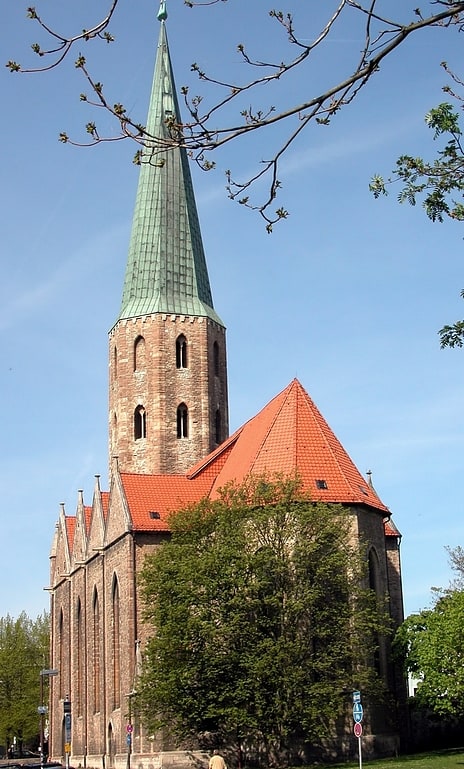
St. Petri, also called Petrikirche, was founded in the 12th century as the fourth parish church of the Weichbild Altstadt in Braunschweig. It is located on the street "An der Petrikirche". The parish hall is located on Lange Straße. The Gothic church with a 71 meter high steeple has a distinctive copper rooster on the spire since 1971.
Address: 9 An der Petrikirche, Brunswick
Zoo Arche Noah
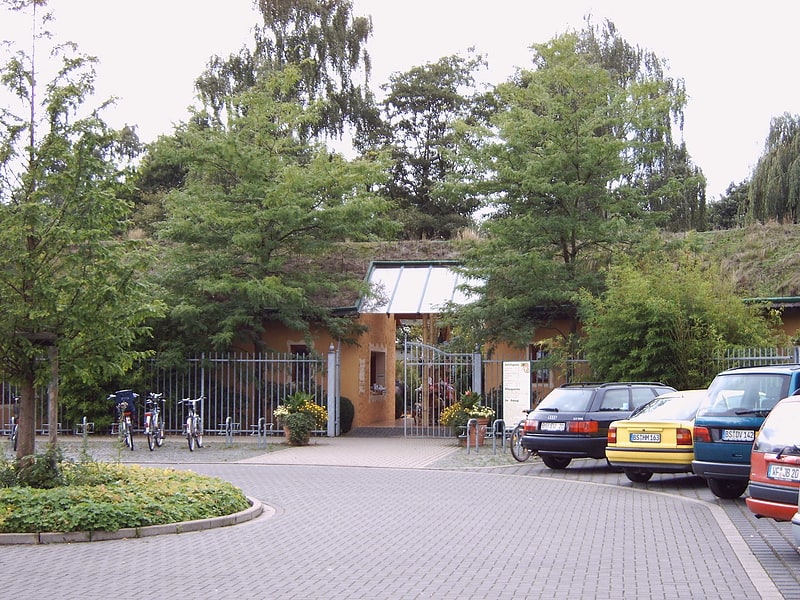
Noah's Ark Zoo Braunschweig is a zoo in Braunschweig, Germany.
Compared to other zoological gardens, the park is rather small, with about 300 animals of 50 species kept in natural enclosures. The park is family-owned and has a sister zoo only about 15 km away, the Essehof Zoo in Lehre.
The opening of the facility took place in 1964. In 1995 the zoo was expanded. In 2001, a new entrance building was opened. Here is also a catering facility. Furthermore, a new children's playground and a parking lot were built.
The Verein der Zoofreunde Braunschweig und Umgebung e. V. was dissolved in 2016.
Among the animals kept are the mourning swan, bearded owl, lizard monkey, white-tufted monkey, green iguana, raccoon, cheetah, short-clawed otter, tiger, green-winged macaw, coati and Bactrian camel.
Address: Leipziger Str. 190, 38124 Braunschweig
Heinrichslinde
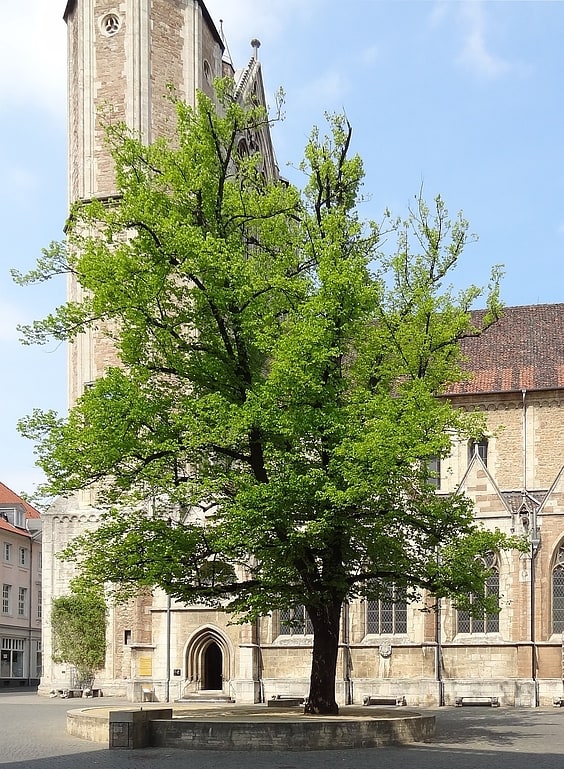
The Heinrichslinde in Braunschweig, also known as Heinrich the Lion's lime tree, Dom- or Burglinde, is a significant solitary tree on the cathedral square and is considered a green landmark of the city. Today's linden replaces the historic one, which, according to legend, was planted by Henry the Lion himself in 1173, before construction began on Brunswick Cathedral, and was considered the city's oldest tree until it collapsed in 1894. The old tree was a summer linden, the new one is a winter linden. It has a height of 19 m, a trunk circumference of 2.10 m and a crown diameter of 12 m. The lime tree stands on the western part of the Cathedral Square, the southern side of the Cathedral and is surrounded by a roundel, on the southern edge of which there is a drinking fountain.
Hagenmarkt

The Hagenmarkt is the central square of the Braunschweig Weichbild Hagen. It can be reached via Wendenstraße, Fallersleber Straße, Casparistraße, Hagenbrücke and Bohlweg.
Wasserturm am Giersberg

Schul- und Bürgergarten
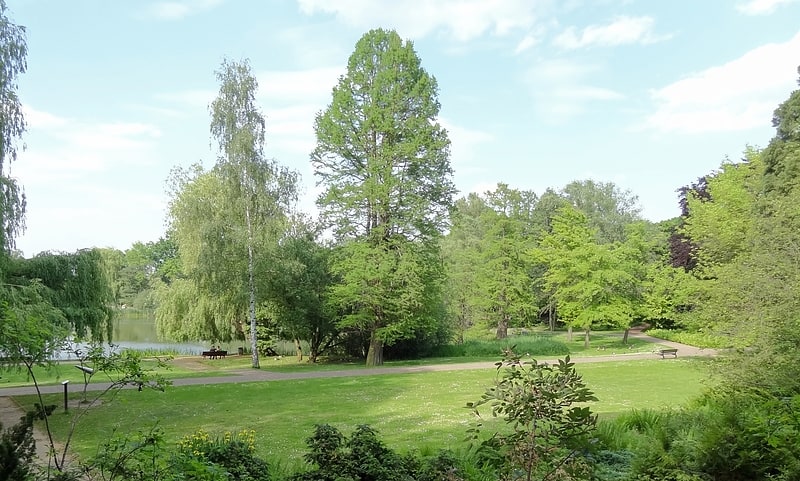
The Dowesee School and Civic Garden is a 9.07-acre municipal park in northern Brunswick. It was created in 1919 as a secondary school garden and expanded in 1953. It is located on the Doweseeweg north of the Siegfriedviertel between the Vorwerksiedlung and the Schuntersiedlung and south of the Schunteraue landscape conservation area. It is surrounded by a water protection area.
Altstadtmarkt
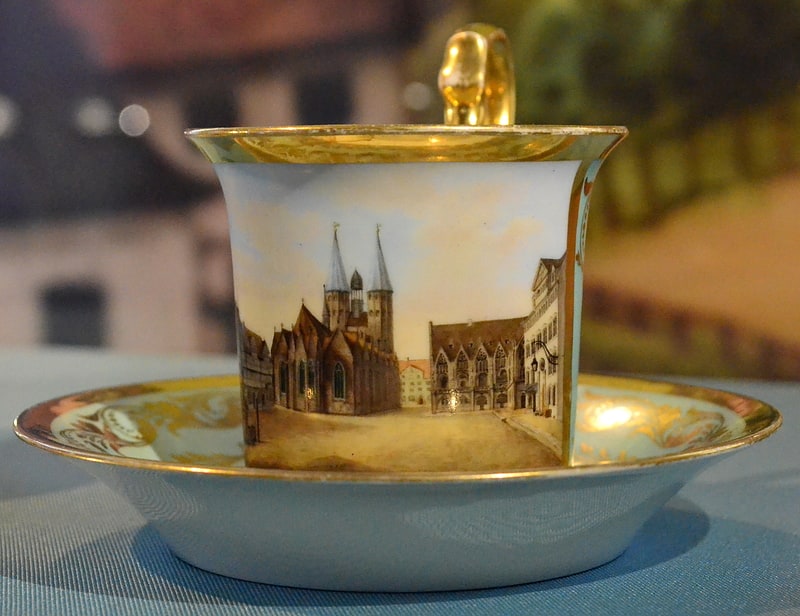
The Old Town Square - a historic square in the Brunszwicki Old Town. One of the most important historic bands in the city.
The Old Town (Altstadt) occupies the western part of the historic bruxuria. A rectangular market was created in the center, already known in the 12th century. Later known from the Middle Affairs as the Brunswicense Forum (1206), de Market in der Oldenstat (1268). Throughout the Middle Ages, the Old Town was the center of the Brunswick middle class, which was an opposition to the prince, which resided on the island on the Oker River in the castle residence. The market has become a shopping center of this part of the city. During the last war, the market buildings were seriously damaged. The reconstruction restored its former splendor.
Address: Altstadtmarkt 8, 38100 Braunschweig